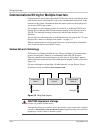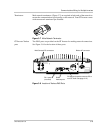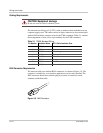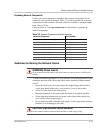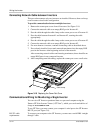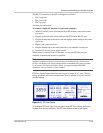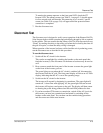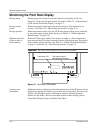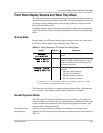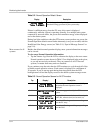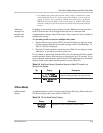
Starting the Inverter
4–2 975-0253-01-01
Commissioning Procedure
To ensure that each GT Inverter is wired correctly, each inverter should be wired
individually using the wiring procedures in Chapter 3, and turned on using this
commissioning procedure. Once a single inverter has been commissioned, it
should be turned off and the wiring and commissioning procedures should be
performed for the next inverter. Repeat in this manner until all the inverters in the
installation have been connected.
Perform this commissioning procedure step-by-step for each GT Inverter
installed. Do not attempt to connect all wires to all inverters and turn on all at the
same time.
To start the GT Inverter:
1. Ensure the AC breaker is off.
2. Ensure the correct multi-contact PV connectors are firmly plugged into the
GT Inverter as described in “Connecting the DC Wiring” on page 3–2.
3. Ensure the AC quick connect is firmly inserted into the AC connector on the
GT Inverter and the coupling ring is tight.
4. Uncover the PV array and/or close the main DC disconnect switch, if one is
installed.
Ensure the PV array is producing the required output voltage.
5. Connect the utility grid voltage by switching the AC circuit breaker on.
6. Monitor the startup sequence on the front panel LCD.
The GT Inverter starts automatically when it receives DC voltage within the
correct range and it is connected to an acceptable grid.
CAUTION: Equipment damage
Improper wiring may cause permanent damage to the GT Inverter. Take special care to
ensure the positive (+) and negative (–) wires from a single array connect to the same GT
Inverter.
WARNING: Shock hazard
Hazardous voltages are present from two sources. Use extreme caution during startup
procedure. Before applying power to the GT Inverter, ensure all AC and DC wiring is
correct.
WARNING: Shock hazard
Ensure the protective earth (ground) wire from the inverter is connected to Earth before
applying AC. Failure to do so could result in a shock hazard upon touching the enclosure.
Consult the local utility for specific grounding requirements.



